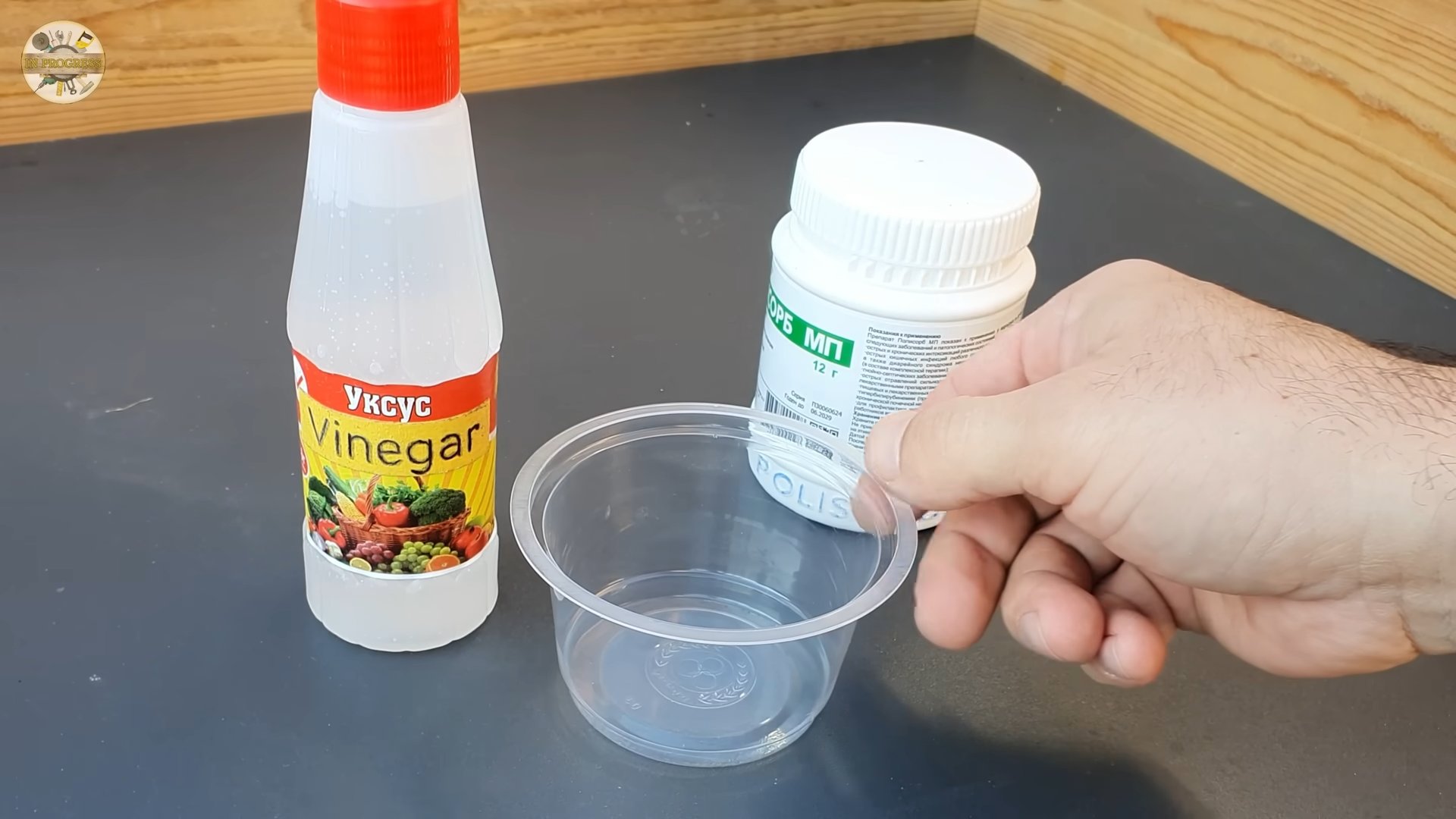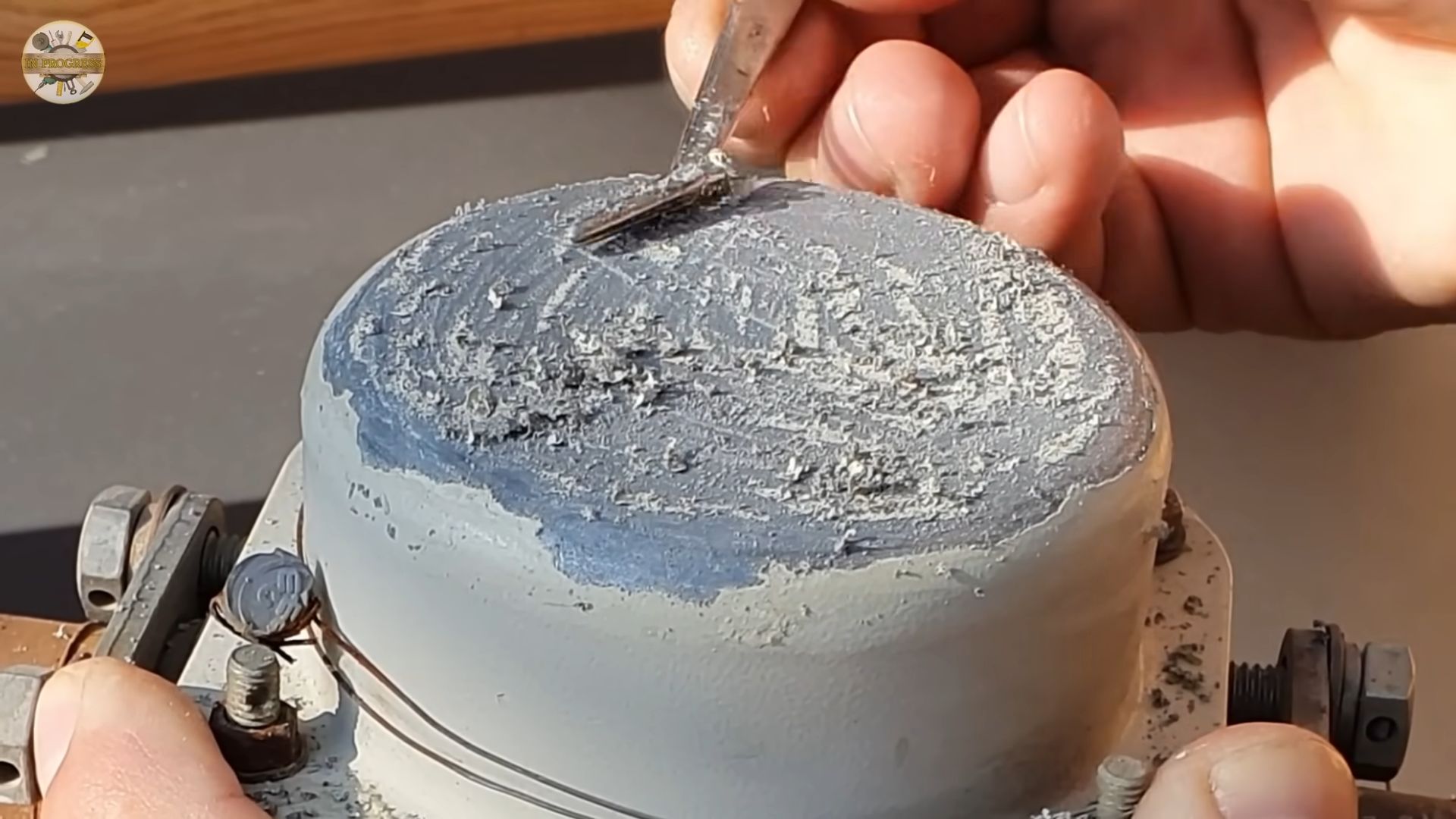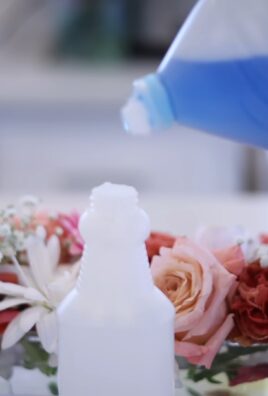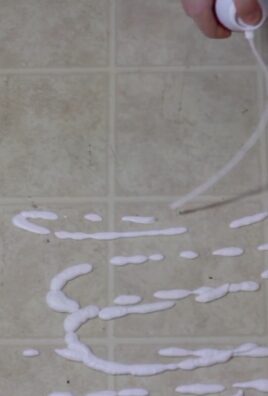Vinegar and Vaseline skin benefits – sounds like an odd combination, right? I know, I thought so too at first! But trust me, this unexpected duo might just be the answer to some of your most persistent skin woes. For centuries, vinegar, particularly apple cider vinegar, has been celebrated for its medicinal properties, dating back to ancient civilizations who used it as a natural antiseptic and cleanser. Vaseline, on the other hand, has been a skincare staple for over a century, known for its incredible moisturizing and protective abilities.
So, why are we talking about mixing these two seemingly disparate ingredients? Well, because the potential vinegar and Vaseline skin benefits are surprisingly impressive! In today’s world, we’re constantly bombarded with expensive skincare products promising miracle results. But what if I told you that a simple, affordable DIY remedy could address issues like dry skin, minor irritations, and even help improve your skin’s overall texture?
This article is your ultimate guide to unlocking the secrets of this powerful combination. We’ll delve into the science behind why it works, explore various ways to use it safely and effectively, and address any concerns you might have. Get ready to discover a simple yet effective way to achieve healthier, happier skin without breaking the bank!

DIY Skin Savior: Vinegar and Vaseline for Radiant Skin
Hey there, fellow skincare enthusiasts! I’m excited to share a simple yet surprisingly effective DIY skin hack that I’ve been experimenting with: a combination of vinegar and Vaseline. Yes, you read that right! While it might sound a bit unusual, the results I’ve seen have been pretty amazing. This isn’t about replacing your entire skincare routine, but rather adding a targeted treatment for specific skin concerns.
Before we dive in, a quick disclaimer: I’m not a dermatologist, and everyone’s skin is different. Always do a patch test before applying anything new to your face, especially if you have sensitive skin. Now that that’s out of the way, let’s get started!
Understanding the Power Duo: Vinegar and Vaseline
So, why these two seemingly disparate ingredients? Let’s break it down:
* **Vinegar (Specifically Apple Cider Vinegar – ACV):** ACV is a natural alpha-hydroxy acid (AHA). AHAs are known for their exfoliating properties, helping to slough off dead skin cells, unclog pores, and even out skin tone. It also has antibacterial and anti-inflammatory properties, which can be beneficial for acne-prone skin. However, it’s crucial to dilute ACV properly, as undiluted vinegar can be harsh and irritating.
* **Vaseline (Petroleum Jelly):** Vaseline is an occlusive moisturizer, meaning it creates a barrier on the skin’s surface that prevents moisture loss. It’s incredibly effective at hydrating dry, cracked skin and protecting it from environmental aggressors. Some people worry about Vaseline clogging pores, but it’s actually non-comedogenic for most people.
The magic happens when you combine these two. The ACV gently exfoliates and preps the skin, while the Vaseline locks in moisture and helps to repair the skin barrier. It’s like a mini spa treatment in the comfort of your own home!
What You’ll Need
Before we get started, gather these supplies:
* **Apple Cider Vinegar (ACV):** Make sure it’s raw, unfiltered ACV with “the mother” (that cloudy sediment at the bottom). This type of ACV contains beneficial enzymes and probiotics.
* **Vaseline (Petroleum Jelly):** Plain, unflavored Vaseline is best.
* **Water:** For diluting the ACV.
* **Cotton Pads or Balls:** For applying the diluted ACV.
* **Clean Towel:** For patting your skin dry.
* **Small Bowl:** For mixing the ACV and water.
* **Spatula or Clean Fingers:** For applying the Vaseline.
Step-by-Step Guide: The Vinegar and Vaseline Treatment
Here’s the process I follow for my vinegar and Vaseline treatment. Remember to adjust the frequency and concentration based on your skin’s needs and tolerance.
Phase 1: Preparing the ACV Solution
This is the most crucial step, as using undiluted ACV can cause irritation.
1. **Dilute the ACV:** In the small bowl, mix ACV and water. I usually start with a 1:3 ratio (1 part ACV to 3 parts water) for my face. If you have sensitive skin, start with an even weaker solution, like 1:5 or even 1:10. For areas like elbows or feet, you can use a stronger solution, like 1:2.
2. **Test the Solution:** Before applying it to your entire face, dab a small amount of the diluted ACV solution on a discreet area, like behind your ear or on your inner arm. Wait 24 hours to see if you experience any redness, itching, or irritation. If you do, dilute the solution further or discontinue use.
Phase 2: Applying the ACV Solution
Now that you’ve prepared and tested your ACV solution, it’s time to apply it to your skin.
3. **Cleanse Your Skin:** Start with a clean canvas. Gently cleanse your face with your regular cleanser to remove any makeup, dirt, or oil. Pat your skin dry with a clean towel.
4. **Apply the ACV Solution:** Soak a cotton pad or ball in the diluted ACV solution. Gently swipe the cotton pad over the areas you want to treat. Avoid the delicate skin around your eyes and mouth.
5. **Leave it On:** Allow the ACV solution to sit on your skin for 5-10 minutes. You might feel a slight tingling sensation, which is normal. If you experience any burning or excessive redness, rinse it off immediately.
6. **Rinse Thoroughly:** After the allotted time, rinse your face thoroughly with lukewarm water. Make sure to remove all traces of the ACV solution. Pat your skin dry with a clean towel.
Phase 3: Sealing in the Moisture with Vaseline
This is where the magic happens!
7. **Apply a Thin Layer of Vaseline:** While your skin is still slightly damp, apply a thin layer of Vaseline to the treated areas. You don’t need to slather it on; a thin, even layer is sufficient.
8. **Massage Gently:** Gently massage the Vaseline into your skin using upward, circular motions. This will help to improve circulation and ensure that the Vaseline is evenly distributed.
9. **Leave it On Overnight:** For best results, leave the Vaseline on overnight. This will allow it to deeply hydrate and repair your skin while you sleep.
Phase 4: The Morning After
10. **Gently Cleanse (Optional):** In the morning, you can gently cleanse your face with a mild cleanser to remove any excess Vaseline. However, if your skin feels well-hydrated, you can simply rinse with lukewarm water.
11. **Continue Your Routine:** Follow up with your regular skincare routine, including sunscreen during the day.
Targeted Treatments: Where This Hack Shines
I’ve found this vinegar and Vaseline combination to be particularly effective for the following skin concerns:
* **Dry, Cracked Skin:** This is where Vaseline truly shines. The occlusive properties lock in moisture and create a protective barrier, allowing dry, cracked skin to heal. I’ve used it on my elbows, knees, and even my heels with great success.
* **Acne and Blemishes:** The antibacterial and anti-inflammatory properties of ACV can help to reduce inflammation and fight acne-causing bacteria. The Vaseline helps to protect the skin and prevent further irritation. I’ve found it helpful for spot-treating blemishes.
* **Uneven Skin Tone and Hyperpigmentation:** The exfoliating properties of ACV can help to fade dark spots and even out skin tone over time. Be patient, as it takes consistent use to see noticeable results.
* **Rough Texture:** The ACV helps to slough off dead skin cells, revealing smoother, softer skin. The Vaseline helps to hydrate and protect the newly exfoliated skin.
* **Eczema Patches:** While not a cure, the combination can help to soothe and hydrate eczema patches. The ACV can help to reduce inflammation, and the Vaseline can help to protect the skin barrier. Always consult with a dermatologist for proper eczema management.
Important Considerations and Tips
* **Patch Test is Key:** I can’t stress this enough! Always do a patch test before applying the ACV solution to your entire face.
* **Start Slow:** Begin with a weaker ACV solution and gradually increase the concentration as your skin tolerates it.
* **Listen to Your Skin:** Pay attention to how your skin reacts to the treatment. If you experience any irritation, redness, or burning, discontinue use or dilute the ACV solution further.
* **Don’t Overdo It:** Using ACV too frequently can strip your skin of its natural oils and lead to dryness and irritation. I recommend using this treatment no more than 2-3 times per week.
* **Sun Protection is Essential:** AHAs can make your skin more sensitive to the sun. Always wear sunscreen with an SPF of 30 or higher during the day, especially after using this treatment.
* **Not for Everyone:** This treatment may not be suitable for everyone, especially those with very sensitive skin, rosacea, or other skin conditions. Consult with a dermatologist if you have any concerns.
* **Be Patient:** It takes time to see results. Don’t expect overnight miracles. Consistent use is key.
* **Adjust the Ratio:** Depending on the area you are treating, you can adjust the ratio of ACV to water. For example, for feet, you can use a stronger solution than you would for your face.
* **Consider the Time of Day:** I prefer to do this treatment at night because it allows the Vaseline to work its magic while I sleep. Plus, it avoids any potential sun sensitivity issues.
* **Cleanliness is Important:** Always use clean cotton pads, towels, and utensils to prevent the spread of bacteria.
* **Don’t Mix with Other Actives:** Avoid using this treatment in conjunction with other active ingredients, such as retinoids or benzoyl peroxide, as this can increase the risk of irritation.
My Personal

Conclusion
So, there you have it! This simple yet surprisingly effective DIY trick, combining the humble power of vinegar and the occlusive properties of Vaseline, offers a pathway to potentially smoother, healthier-looking skin. We’ve explored how the acetic acid in vinegar can act as a gentle exfoliant, helping to slough away dead skin cells and reveal a brighter complexion. We’ve also highlighted Vaseline’s ability to lock in moisture, creating a protective barrier that shields your skin from environmental aggressors and promotes healing.
This isn’t about replacing your entire skincare routine overnight. Instead, it’s about adding a targeted treatment that can address specific concerns, like rough patches, dryness, or even minor skin irritations. The beauty of this DIY approach lies in its simplicity and affordability. You likely already have these ingredients in your pantry and medicine cabinet, making it an accessible option for anyone looking to improve their skin’s texture and appearance.
Why is this DIY trick a must-try? Because it’s a cost-effective, readily available solution that combines exfoliation and intense moisturization. It’s a gentle approach that can be customized to suit your individual skin needs. It’s a chance to take control of your skincare and experiment with natural ingredients. And, most importantly, it has the potential to deliver visible results.
Looking for variations? Consider infusing your vinegar with herbs like lavender or chamomile for added soothing benefits. You could also add a drop or two of essential oil, such as tea tree oil for its antibacterial properties (use with caution and always perform a patch test first!). For a richer, more emollient treatment, mix a small amount of your favorite facial oil with the Vaseline before application. Remember, the key is to listen to your skin and adjust the recipe accordingly.
We understand that trying new things can be daunting, especially when it comes to skincare. That’s why we encourage you to start slowly, with a small patch test on an inconspicuous area of your skin. Observe how your skin reacts before applying the mixture to larger areas. And remember, consistency is key. You won’t see results overnight, but with regular use, you may notice a significant improvement in your skin’s texture, hydration, and overall radiance.
Don’t just take our word for it! We urge you to try this vinegar and Vaseline skin benefits trick for yourself. We are confident that you will be surprised by the results. We are eager to hear about your experiences. Share your before-and-after photos, your tips and tricks, and your overall thoughts in the comments section below. Let’s create a community of skincare enthusiasts who are passionate about natural, effective, and affordable solutions. Your feedback will not only help others but also contribute to our collective understanding of this powerful DIY remedy. So go ahead, give it a try, and let us know what you think!
FAQ
What are the potential benefits of using vinegar and Vaseline on my skin?
The combination of vinegar and Vaseline offers a dual-action approach to skincare. Vinegar, particularly apple cider vinegar, contains acetic acid, which acts as a mild exfoliant. This can help to remove dead skin cells, unclog pores, and brighten the complexion. Vaseline, on the other hand, is an occlusive moisturizer. It creates a protective barrier on the skin, preventing moisture loss and promoting healing. Together, they can help to improve skin texture, hydration, and overall appearance.
What type of vinegar should I use?
Apple cider vinegar (ACV) is generally recommended for skincare due to its lower acidity compared to other types of vinegar. However, it’s crucial to dilute it properly with water before applying it to your skin. White vinegar can also be used, but it’s even more acidic and requires a higher dilution ratio. Always start with a very diluted solution and gradually increase the concentration as tolerated.
How do I properly dilute the vinegar?
The ideal dilution ratio depends on your skin type and sensitivity. A good starting point is a 1:1 ratio of vinegar to water (e.g., 1 tablespoon of vinegar mixed with 1 tablespoon of water). If you have sensitive skin, you may want to start with an even more diluted solution, such as 1 part vinegar to 2 or 3 parts water. Always perform a patch test before applying the mixture to larger areas of your skin.
How often should I use this treatment?
Start with using the vinegar and Vaseline treatment once or twice a week. Observe how your skin reacts and adjust the frequency accordingly. If you experience any irritation, redness, or dryness, reduce the frequency or discontinue use altogether. Some people may be able to tolerate daily use, while others may only need it once a week.
Can I use this treatment on my face?
Yes, you can use this treatment on your face, but with caution. The skin on your face is generally more sensitive than the skin on your body. Therefore, it’s essential to use a more diluted vinegar solution and perform a patch test before applying it to your entire face. Avoid using it on areas around the eyes and mouth.
So, there you have it! This simple yet surprisingly effective DIY trick, combining the humble power of vinegar and the occlusive properties of Vaseline, offers a pathway to potentially smoother, healthier-looking skin. We’ve explored how the acetic acid in vinegar can act as a gentle exfoliant, helping to slough away dead skin cells and reveal a brighter complexion. We’ve also highlighted Vaseline’s ability to lock in moisture, creating a protective barrier that shields your skin from environmental aggressors and promotes healing.
This isn’t about replacing your entire skincare routine overnight. Instead, it’s about adding a targeted treatment that can address specific concerns, like rough patches, dryness, or even minor skin irritations. The beauty of this DIY approach lies in its simplicity and affordability. You likely already have these ingredients in your pantry and medicine cabinet, making it an accessible option for anyone looking to improve their skin’s texture and appearance.
Why is this DIY trick a must-try? Because it’s a cost-effective, readily available solution that combines exfoliation and intense moisturization. It’s a gentle approach that can be customized to suit your individual skin needs. It’s a chance to take control of your skincare and experiment with natural ingredients. And, most importantly, it has the potential to deliver visible results.
Looking for variations? Consider infusing your vinegar with herbs like lavender or chamomile for added soothing benefits. You could also add a drop or two of essential oil, such as tea tree oil for its antibacterial properties (use with caution and always perform a patch test first!). For a richer, more emollient treatment, mix a small amount of your favorite facial oil with the Vaseline before application. Remember, the key is to listen to your skin and adjust the recipe accordingly.
We understand that trying new things can be daunting, especially when it comes to skincare. That’s why we encourage you to start slowly, with a small patch test on an inconspicuous area of your skin. Observe how your skin reacts before applying the mixture to larger areas. And remember, consistency is key. You won’t see results overnight, but with regular use, you may notice a significant improvement in your skin’s texture, hydration, and overall radiance.
Don’t just take our word for it! We urge you to try this vinegar and Vaseline skin benefits trick for yourself. We are confident that you will be surprised by the results. We are eager to hear about your experiences. Share your before-and-after photos, your tips and tricks, and your overall thoughts in the comments section below. Let’s create a community of skincare enthusiasts who are passionate about natural, effective, and affordable solutions. Your feedback will not only help others but also contribute to our collective understanding of this powerful DIY remedy. So go ahead, give it a try, and let us know what you think!
FAQ
What are the potential benefits of using vinegar and Vaseline on my skin?
The combination of vinegar and Vaseline offers a dual-action approach to skincare. Vinegar, particularly apple cider vinegar, contains acetic acid, which acts as a mild exfoliant. This can help to remove dead skin cells, unclog pores, and brighten the complexion. Vaseline, on the other hand, is an occlusive moisturizer. It creates a protective barrier on the skin, preventing moisture loss and promoting healing. Together, they can help to improve skin texture, hydration, and overall appearance.
What type of vinegar should I use?
Apple cider vinegar (ACV) is generally recommended for skincare due to its lower acidity compared to other types of vinegar. However, it’s crucial to dilute it properly with water before applying it to your skin. White vinegar can also be used, but it’s even more acidic and requires a higher dilution ratio. Always start with a very diluted solution and gradually increase the concentration as tolerated.
How do I properly dilute the vinegar?
The ideal dilution ratio depends on your skin type and sensitivity. A good starting point is a 1:1 ratio of vinegar to water (e.g., 1 tablespoon of vinegar mixed with 1 tablespoon of water). If you have sensitive skin, you may want to start with an even more diluted solution, such as 1 part vinegar to 2 or 3 parts water. Always perform a patch test before applying the mixture to larger areas of your skin.
How often should I use this treatment?
Start with using the vinegar and Vaseline treatment once or twice a week. Observe how your skin reacts and adjust the frequency accordingly. If you experience any irritation, redness, or dryness, reduce the frequency or discontinue use altogether. Some people may be able to tolerate daily use, while others may only need it once a week.
Can I use this treatment on my face?
Yes, you can use this treatment on your face, but with caution. The skin on your face is generally more sensitive than the skin on your body. Therefore, it’s essential to use a more diluted vinegar solution and perform a patch test before applying it to your entire face. Avoid using it on areas around the eyes and mouth.
Can I use this treatment on other parts of my body?
Yes, this treatment can be used on other parts of your body, such as your elbows, knees, feet, and hands. These areas often experience dryness and roughness, making them ideal candidates for this treatment.
What are the potential side effects?
Potential side effects include skin irritation, redness, dryness, and burning. These side effects are more likely to occur if the vinegar is not properly diluted or if you have sensitive skin. If you experience any of these side effects, discontinue use and consult with a dermatologist.
Is this treatment safe for all skin types?
While many people can benefit from this treatment, it may not be suitable for all skin types. People with very sensitive skin, eczema, rosacea, or other skin conditions should exercise caution and consult with a dermatologist before trying it.
Can I use this treatment if I’m pregnant or breastfeeding?
If you are pregnant or breastfeeding, it’s always best to consult with your doctor before trying any new skincare treatments.
How long should I leave the vinegar on my skin?
Start with leaving the diluted vinegar on your skin for just a few minutes (e.g., 1-2 minutes). Gradually increase the time as tolerated, up to a maximum of 5-10 minutes. Rinse thoroughly with water after each application.
Do I apply the Vaseline immediately after rinsing off the vinegar?
Yes, apply a thin layer of Vaseline to the treated area immediately after rinsing off the vinegar. This will help to lock in moisture and protect your skin.
Can I use this treatment to treat acne?
While vinegar may have some antibacterial properties that could potentially help with acne, it’s not a proven acne treatment. In fact, using vinegar on acne-prone skin could potentially irritate the skin and worsen breakouts. It’s best to consult with a dermatologist for effective acne treatment options.
Can I use this treatment to lighten dark spots?
Some people believe that vinegar can help to lighten dark spots due to its exfoliating properties. However, there is limited scientific evidence to support this claim. While it may help to fade dark spots over time, it’s not a quick fix. There are other more effective treatments available for hyperpigmentation.
What if I don’t have Vaseline? Can I use another moisturizer?
While Vaseline is the recommended occlusive moisturizer for this treatment, you can use another thick, emollient moisturizer if you don’t have Vaseline. Look for moisturizers that contain ingredients like shea butter, cocoa butter, or ceramides. However, keep in mind that Vaseline is particularly effective at creating a protective barrier and preventing moisture loss.
How long will it take to see results?
The time it takes to see results will vary depending on your skin type, the severity of your skin concerns, and how consistently you use the treatment. Some people may notice an improvement in their skin’s texture and hydration within a few days, while others may take several weeks to see noticeable results. Consistency is key!




Leave a Comment